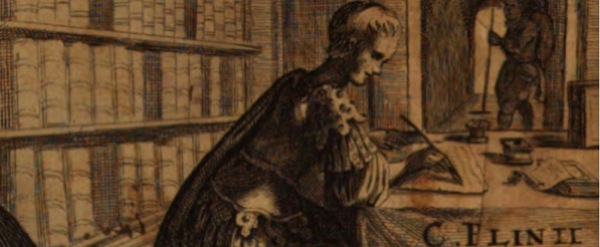Pliny the Younger, ca. 100 A.D. (Ancient History Sourcebook)
On 2 July 1664, Lister wrote in his notebook that he read: ‘Aix. July. 2. Plin. Sec. Epist.’.
Lister was in Aix-en-Provence, and reading the Epistulae of Gaius Plinius Caecilius Secundus, otherwise known as letters of Pliny the Younger (61/62-113 AD).
There are ten books of Pliny’s correspondence. Written to colleagues and friends, the first nine books of letters were intended to be formal literary compositions and cover a variety of topics, including debates and elections in the Roman Senate, domestic matters, social relationships, and advice. The tenth book of letters are to and from the emperor Trajan, written when Pliny was governor of the Roman province of Bithynia-Pontusis (north west Asia Minor). These epistles were not intended to be publicly distributed, and were published posthumously; they offer valuable insights into Roman provincial administration. The best-known of Pliny’s letters are those describing the eruption of Vesuvius in which his uncle Pliny the Elder perished, as well as his letter to Trajan on his attempts to suppress Christianity in Bithynia, with Trajan’s reply approving his policy 1
Historian Ann Blair has analyzed to what extent Pliny the Younger’s accounts of his uncle’s note-taking habits informed Renaissance humanist techniques of collecting and storing information 2 One wonders if Pliny’s careful habits influenced Lister’s own methods of recording his memories of Montpellier.
Lister would later donate a 1693 edition of Pliny’s letters to the University of Oxford.
- Ancient History Sourcebook, Fordham University. ↩
- Ann Blair, ‘The rise of note-taking in Early Modern Europe’, Intellectual History Review 20,3 (2010), 303-16. ↩

